A Presidenta
by Silas Martí
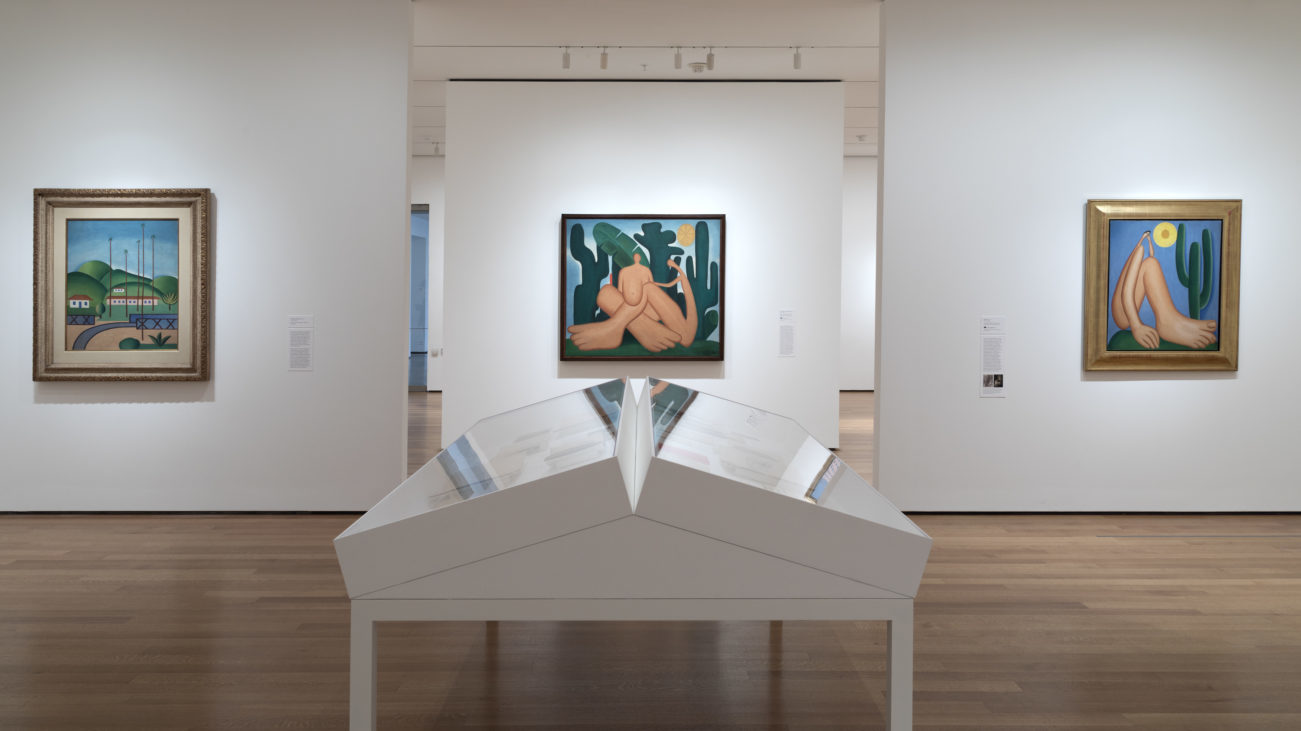
View of "Tarsila do Amaral: Inventing Modern Art in Brazil." Museum of Modern Art, New York. 2018.
She may not have been the most radical, but she was, without question, the most exuberant. Tarsila do Amaral, a monumental presence in Brazilian modernism, became larger than life. Her first name alone has been tossed around in artsy circles for generations in South America’s largest country, shorthand for a smoldering brand of feminine avant-gardism, an icon of style and personality who lit up high society cliques in São Paulo and Paris while laying the groundwork for the portrait of a nation. The lush, glossy, and colorful contours of her landscapes and figures seem to say more about her tropical and violent land than its green, yellow and blue national flag.
Tarsila knew this early on, and made it clear in 1925 in her illustration for the cover of the first book of poems by Oswald de Andrade, the most famous of her husbands. She erased the flag’s words “Order and Progress,” two concepts Brazil has never quite mastered, from the white stripe surrounding the blue orb in the center of the banner. In its place she wrote “Pau Brasil”: the name of the tree used to make a fiery red dye that gave this former Portuguese colony its name, and the title of her most celebrated series of paintings and drawings of the nation’s cities and landscapes.

Pau-Brasil was displayed this (northern) spring in a sealed vitrine at the Museum of Modern Art, where Tarsila do Amaral had her first New York retrospective nearly five decades after her death. (The show appeared last year at the Art Institute of Chicago.) You might have missed it, however, as it was dwarfed by the three superlative paintings hanging on the walls nearby, which seemed to rub shoulders in this tightly packed show. To many, Tarsila is just these three paintings: A Negra, Abaporu, and Antropofagia, in that order. The first likely depicts a former slave, a wet nurse from the plantation Tarsila’s wealthy family owned on the outskirts of São Paulo. The second features a melancholy man with a tiny head and giant legs, whom her husband Oswald used as a mascot for his “Cannibalist Manifesto.” The last unites these male and female figures in a composition that screams with the erotically charged friction that has characterized race and gender relations in Brazil since its inception.
Luis Pérez-Oramas and Stephanie D’Alessandro, the curators who staged Tarsila’s American retrospective, seem to follow that line of thought. Brazil’s most famous painter was introduced to a Manhattan audience with the blow-by-blow logic that oriented this phase of her work, a vibrant explosion of color and density bracketed within the 1920s. It was at once reductionist and overwhelming, three small rooms on MoMA’s second floor that heaved with blockbuster intensity. From a corner of one of the galleries, I could see these three major works together, like frames of a film. (A Negra and Antropofagia were loaned from museums in my hometown of São Paulo; Abaporu came up from Buenos Aires.)
The 1920s were indeed a transformative decade for Tarsila, and for modernism. In the years after World War I, the Brazilian avant-garde was coming to terms with the idea that its visual narrative would forever be condemned to negotiate between two antagonistic forces. It would be a clash of the savage and the refined, the wild landscapes of rural Brazil (predominantly black and indigenous) against the heavy hand of pristine, dogmatic European modernity. The exhibition at MoMA made this crystal clear by placing A Negra, Tarsila’s most complex and powerful work, across from another female nude: Study (Academy No. 2), this one depicting a white girl.
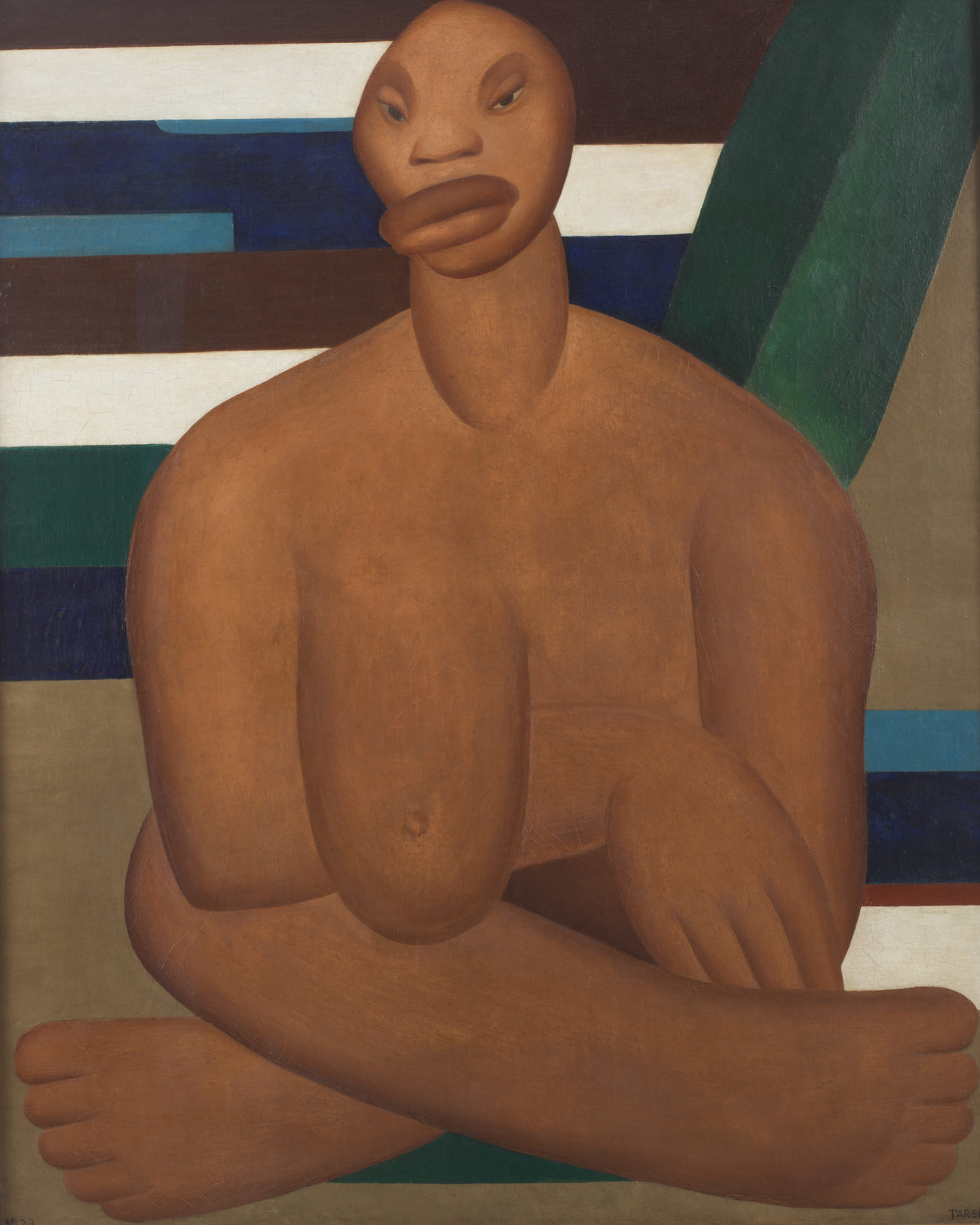
Tarsila painted both in 1923, and she could not have represented two more distinct women. Having studied under Fernand Léger, she devoured and mastered his machinelike, cylindrical depictions of lustrous flesh, and this cubist ancestry is at its peak in the round contours of the model in Study. But the white model seems closer to cogs, wheels, and gears than a real woman, and the pitch-black, impenetrable triangle between her legs more a negation of her sex than an affirmation of it. She could very well have been a landscape, harking back to Cézanne’s cylinders, cones, and spheres. It’s no accident that the title of this piece, like many others made in Léger’s company, is as dry and neutral as possible.
That changes, however, with A Negra. Where the nude in Study occupies just the central third of the composition, this naked figure is almost too large for the canvas; her bald head and stocky feet nearly rub against the edges of the picture plane, and her oversized lips protrude from her face in a stern pout. At center, her right breast droops over her crossed arms, a raw excess of flesh and femininity. Tarsila based this painting on a photograph of a former slave who worked on her family’s farm. The photograph was on view at MoMA too, and the woman, whose name is lost to history — Tarsila did not record it in her photo album — appears in a long white dress and with a full head of hair. All the artist retained from the photograph was the positioning of the wet nurse’s hand and the steps of the stairway behind her, which Tarsila transformed into dashing stripes of color.
While contemporary New Yorkers may not be impressed with Tarsila’s rendering of one particular servant she remembered from her childhood as the ultimate, iconic representation of the black Brazilian woman, it was revolutionary for an artist of her time to tackle the taboo of racial representations in the first decades following the abolition of slavery. (In 1888, when Tarsila was two years old, Brazil became the last country in the Americas to put an end to forced labor, and nearly half a century would pass before the first established black artists appeared on the scene.) This is perhaps one of the earliest examples of anthropophagy at work — the devouring and digesting of foreign aesthetic tropes to found a new Brazilian visual identity. In that sense, A Negra lies somewhere between a Eurocentric, exoticizing depiction of a black subject, much like the paintings of Picasso’s époque nègre, and an ambiguous eulogy for the rural Brazilian wet nurse, splendid yet steeped in plight. This explains her resigned, tragic demeanor, a caged power of nature beaten and prodded to the point that she fades and recedes in the rusty memory of the plantations around São Paulo, where the ground is the same reddish brown as her skin.
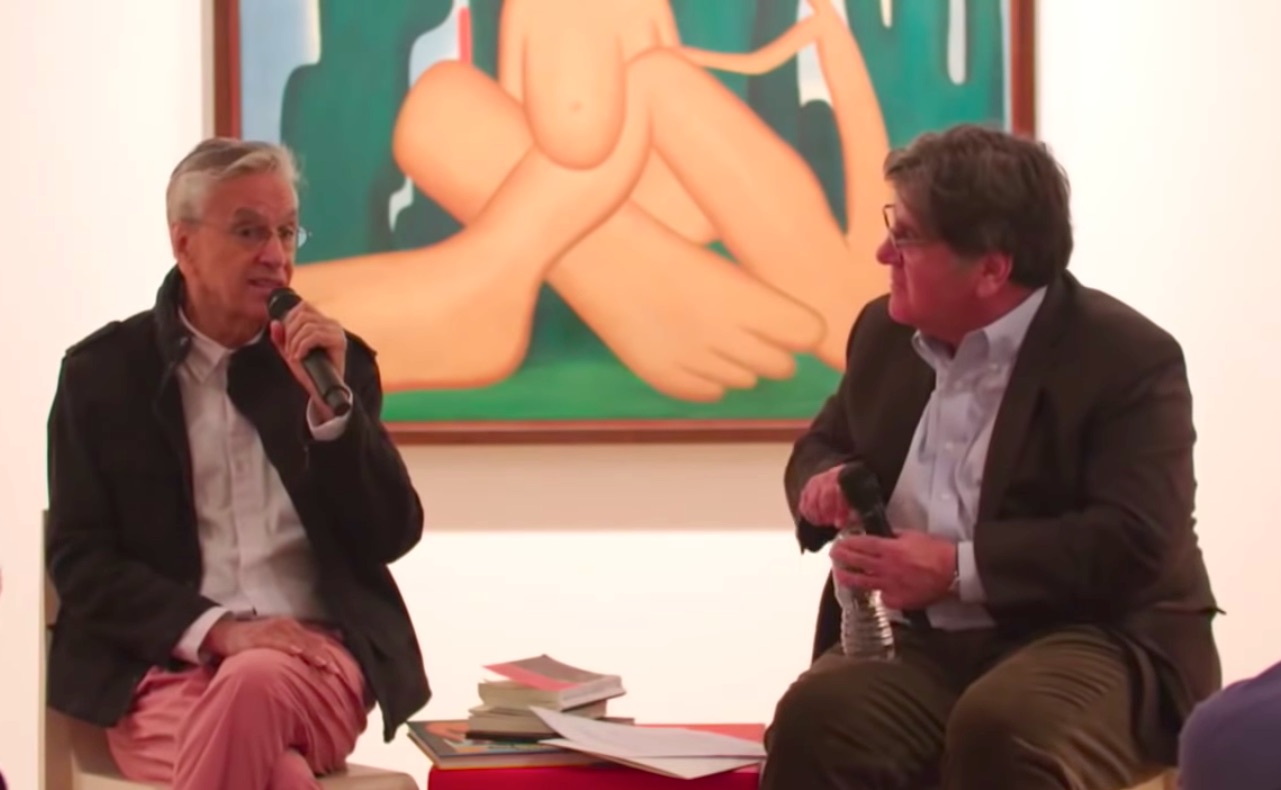
I had the chance to see the musician Caetano Veloso, a pillar of Brazil’s Tropicália movement, when he visited the Tarsila exhibition at MoMA. He spoke about the particular Brazilian resonance of A Negra, and of the black mother who nursed babies born to slaves and masters alike. It is a picture, Veloso told me later, that feels especially urgent in the wake of the violence that now consumes Brazil. He ended his talk by paying tribute to a young, black councilwoman from Rio de Janeiro, named Marielle Franco, who was murdered on March 14, shot four times in the head as she returned home from an event promoting black political participation. The slain politician, whose death sparked massive protests all over the country, had just authorized an investigation of police violence in the city’s slums, where many black boys and girls are being assassinated unceremoniously, their bodies disappearing in unmarked hillside graves. With details of her gruesome murder emerging every minute in the news cycle, it was difficult not see Tarsila’s masterpiece of feminine pride, racialized violence, and historical indifference under a more contemporary light, and a harsher one.
Feminist progress in Brazil has appeared to be reversing these last two years, ever since our first female president, Dilma Rousseff, was ousted from Brasília’s Alvorada Palace in what millions in the country consider a coup d’état. (Her successor, Michel Temer, had no female ministers at all in his first cabinet.) Yet Brazil is nearly unique in having had an artistic avant-garde in which women stood at the forefront. Anita Malfatti, a contemporary of Tarsila — though somewhat overshadowed by Tarsila’s bold personality and looks — reinvented European expressionism for the southern hemisphere, and even devoted much attention to drawing and painting the male nude, a somewhat risqué undertaking for an early-20th-century brasileira. Maria Martins did in sculpture what Tarsila did on canvas — writhing, contorted, otherworldly forms speak of female desire and the dangers of romantic and sexual affection when filtered by what she understood to be the raw energy of the tropics. (Martins’s other claim to fame is a years-long affair with Marcel Duchamp; she is believed to be the model for his final work, Étant donnés.)
None of these later modernists are featured in “Radical Women,” the massive survey of Latin American female artists that has traveled from the Hammer Museum in Los Angeles to the Brooklyn Museum, and which will reopen in August at the Pinacoteca de São Paulo. Its narrative of female avant-gardism begins somewhat later, in the 1960s, when Brazil and several other South American nations were run by military dictatorships. Artistic radicalism took on new forms in this darker context, and these radical women led very different lives than aristocrats like Tarsila, Malfatti, and Martins.
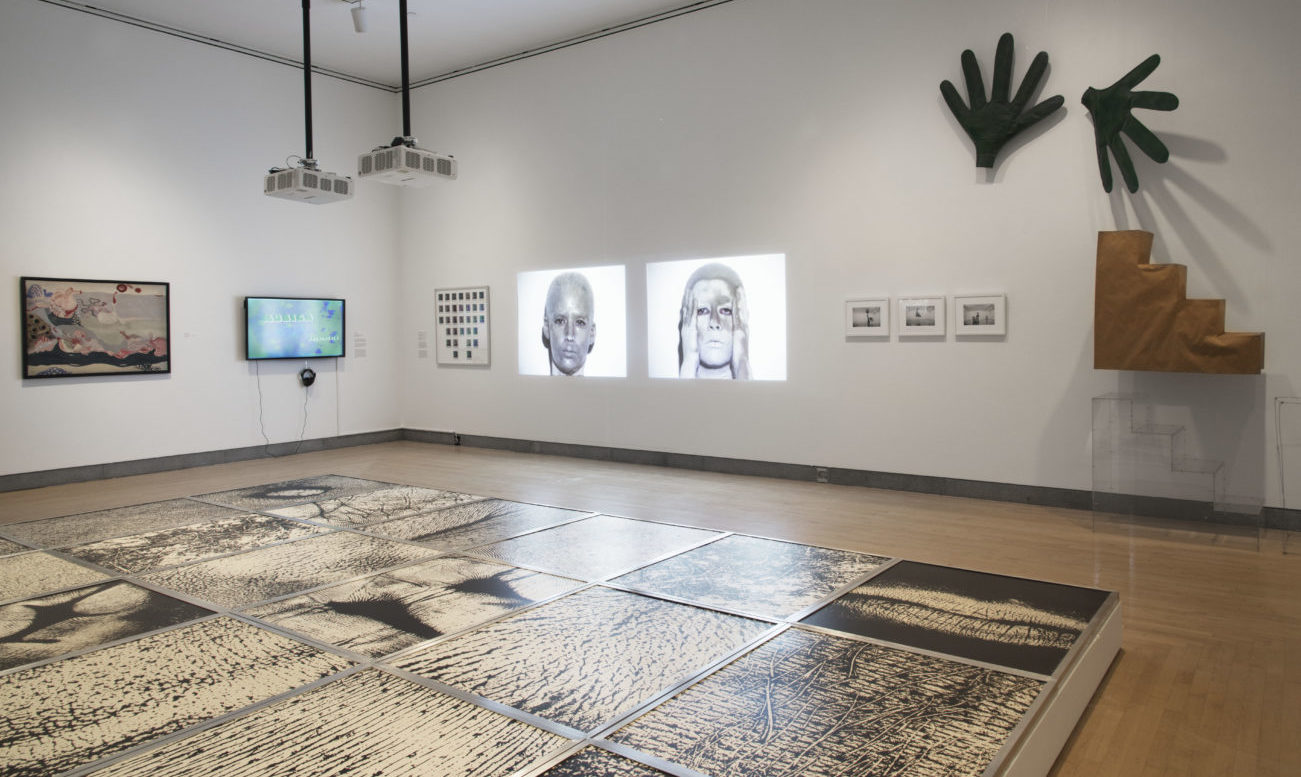
But some of them picked up where that earlier generation left off. In Lygia Pape’s film Eat Me, shot in 1975 at the height of Brazil’s brutal authoritarian regime, two men’s mouths, seen in extreme closeup, open and close to reveal thrashing tongues licking shiny objects. The reference to sexual acts is explicit, especially if you know that “eating” someone, in Portuguese, is slang for having sex. Here Pape seems to be commenting on the transformative power of devouring, a new kind of anthropophagy in the tradition that Tarsila and her husband had begun 50 years before. She and her fellow Neoconcrete artist Lygia Clark were cannibalizing the Brazilian modernist tradition they had inherited, just as musicians like Caetano Veloso were cannibalizing the corpses of bossa nova and rock to create the visual, musical, and performative revolution that was Tropicália. Against a violent and obtuse regime, art, poetry, and music had to resort to underground codes and iconography. It was as if Oswald de Andrade’s “Cannibalist Manifesto” and Tarsila do Amaral’s sensory overload of the Pau-Brasil series had lain dormant for decades, and were being revived by a generation that harnessed their talent for subversion when it was needed most.
While male artists of that era sabotaged urban planning, the press, and national symbols in works that assessed the state of a nation coming undone, Brazil’s radical women turned to the domestic sphere, and later to their own bodies, as places of rebellion and revolution. Anna Maria Maiolino, an Italian-born artist who made São Paulo her home, Wanda Pimentel, and Amelia Toledo all portray the intimate sphere of the home as a battleground. In a photographic performance, Maiolino plays with scissors alone in her bedroom, threatening to pierce her eye, cut her tongue in half, or obliterate her nose. Pimentel’s cartoonish, Pop-like paintings depict interiors as if they were cages for women, with bras and panties strewn on the floor or overflowing out of drawers like so many vestiges of a feminine presence contained and restrained.

Letícia Parente was the boldest of these women when it came to putting her body on the frontlines. In one of her most famous performances, she is seen sewing the words MADE IN BRASIL into the sole of her foot. Needlework, the most feminine of gestures, here becomes laced with brazen violence, and the dark threads, reminiscent of those used at morgues to reseal bodies ripped open for autopsies, spoke of conflict bred at home. Another video shows her with white adhesive tape covering her mouth and eyes, on which she draws simplified outlines of the organs she’s obliterated — women as pretty, blind, gagged little things. The same extreme self-erasure animates a later performance, from 1984, by Lenora de Barros. She starts out brushing her teeth, but gradually the foam takes over her whole face, making her disappear into whiteness.
Two of the largest pieces in “Radical Women,” both by Brazilians, also hint at themes of disappearance, from opposite ends of the aesthetic spectrum. Carmela Gross’s massive brown burlap structure, dominating one of the Brooklyn Museum’s galleries, is an awkward cushion named Presunto — the Portuguese word for ham, but also slang for a dead body, a main product of the dictatorships that ensnared most countries in Latin America. And Vera Chaves Barcellos scanned and printed the texture of the skin of different body parts, hers and her friends’, assembled on the floor into a mosaic of anonymous flesh. It is hers and every woman’s body at the same time — beaten, flattened, and enmeshed with the culture that tortured them, both then and now.
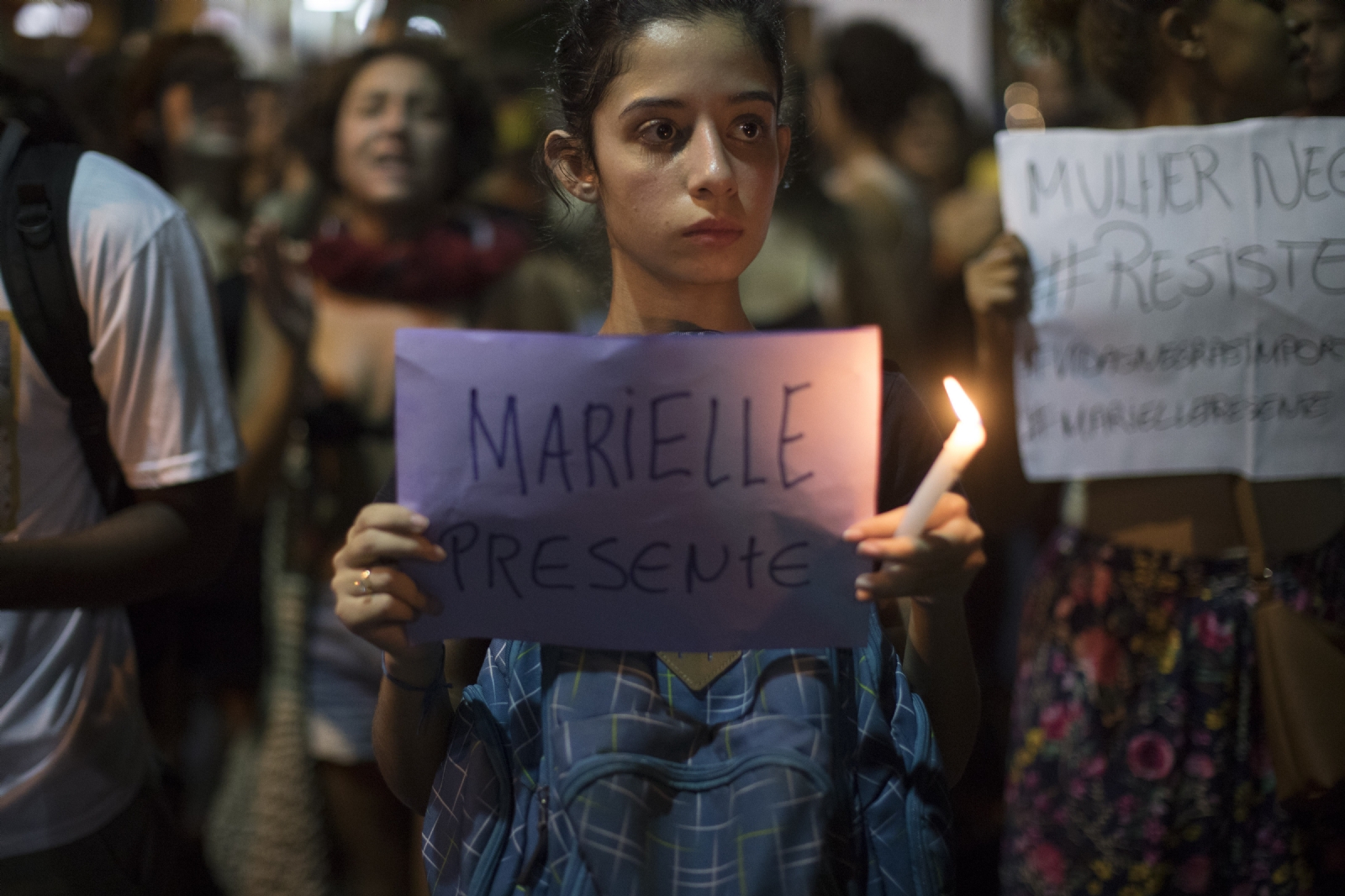
In the days after Marielle Franco’s assassination, protesters on the street all marched to the sound of the same chant. “Marielle presente,” they screamed, invoking her memory: Marielle is here. That insistence on being present reminded me of the strategies of so many of our radical artists, women who wanted to leave a mark and whose protest has never seemed so timely.